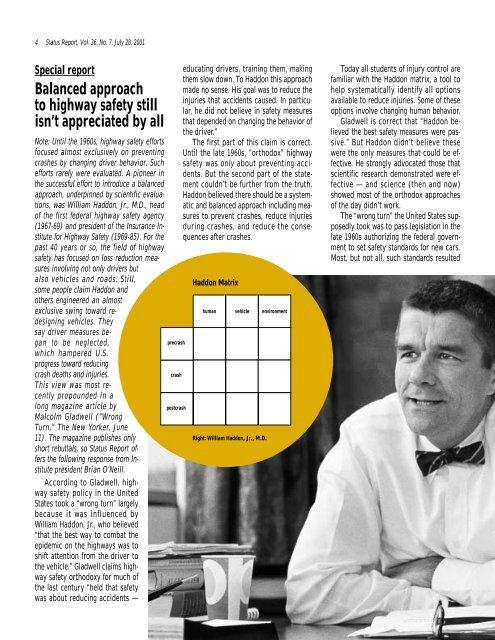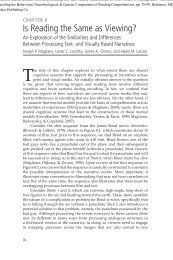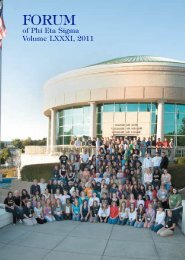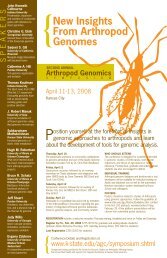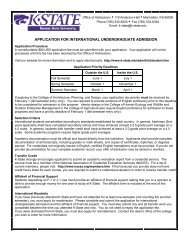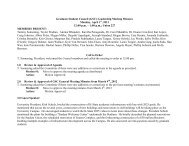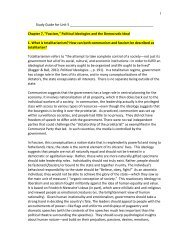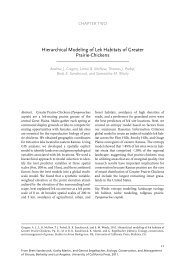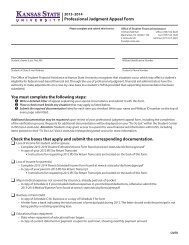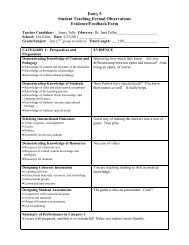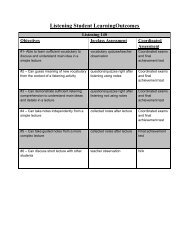Status Report, Vol. 36, No. 7, July 28, 2001 - Insurance Institute for ...
Status Report, Vol. 36, No. 7, July 28, 2001 - Insurance Institute for ...
Status Report, Vol. 36, No. 7, July 28, 2001 - Insurance Institute for ...
Create successful ePaper yourself
Turn your PDF publications into a flip-book with our unique Google optimized e-Paper software.
4 <strong>Status</strong> <strong>Report</strong>, <strong>Vol</strong>. <strong>36</strong>, <strong>No</strong>. 7, <strong>July</strong> <strong>28</strong>, <strong>2001</strong><br />
Special report<br />
Balanced approach<br />
to highway safety still<br />
isn’t appreciated by all<br />
<strong>No</strong>te: Until the 1960s, highway safety ef<strong>for</strong>ts<br />
focused almost exclusively on preventing<br />
crashes by changing driver behavior. Such<br />
ef<strong>for</strong>ts rarely were evaluated. A pioneer in<br />
the successful ef<strong>for</strong>t to introduce a balanced<br />
approach, underpinned by scientific evaluations,<br />
was William Haddon, Jr., M.D., head<br />
of the first federal highway safety agency<br />
(1967-69) and president of the <strong>Insurance</strong> <strong>Institute</strong><br />
<strong>for</strong> Highway Safety (1969-85). For the<br />
past 40 years or so, the field of highway<br />
safety has focused on loss reduction measures<br />
involving not only drivers but<br />
also vehicles and roads. Still,<br />
some people claim Haddon and<br />
others engineered an almost<br />
exclusive swing toward redesigning<br />
vehicles. They<br />
say driver measures began<br />
to be neglected,<br />
which hampered U.S.<br />
progress toward reducing<br />
crash deaths and injuries.<br />
This view was most recently<br />
propounded in a<br />
long magazine article by<br />
Malcolm Gladwell (“Wrong<br />
Turn,” The New Yorker, June<br />
11). The magazine publishes only<br />
short rebuttals, so <strong>Status</strong> <strong>Report</strong> offers<br />
the following response from <strong>Institute</strong><br />
president Brian O’Neill.<br />
According to Gladwell, highway<br />
safety policy in the United<br />
States took a “wrong turn” largely<br />
because it was influenced by<br />
William Haddon, Jr., who believed<br />
“that the best way to combat the<br />
epidemic on the highways was to<br />
shift attention from the driver to<br />
the vehicle.” Gladwell claims highway<br />
safety orthodoxy <strong>for</strong> much of<br />
the last century “held that safety<br />
was about reducing accidents —<br />
precrash<br />
crash<br />
postcrash<br />
educating drivers, training them, making<br />
them slow down. To Haddon this approach<br />
made no sense. His goal was to reduce the<br />
injuries that accidents caused. In particular,<br />
he did not believe in safety measures<br />
that depended on changing the behavior of<br />
the driver.”<br />
The first part of this claim is correct.<br />
Until the late 1960s, “orthodox” highway<br />
safety was only about preventing accidents.<br />
But the second part of the statement<br />
couldn’t be further from the truth.<br />
Haddon believed there should be a systematic<br />
and balanced approach including measures<br />
to prevent crashes, reduce injuries<br />
during crashes, and reduce the consequences<br />
after crashes.<br />
Haddon Matrix<br />
human<br />
vehicle<br />
Right: William Haddon, Jr., M.D.<br />
environment<br />
Today all students of injury control are<br />
familiar with the Haddon matrix, a tool to<br />
help systematically identify all options<br />
available to reduce injuries. Some of these<br />
options involve changing human behavior.<br />
Gladwell is correct that “Haddon believed<br />
the best safety measures were passive.”<br />
But Haddon didn’t believe these<br />
were the only measures that could be effective.<br />
He strongly advocated those that<br />
scientific research demonstrated were effective<br />
— and science (then and now)<br />
showed most of the orthodox approaches<br />
of the day didn’t work.<br />
The “wrong turn” the United States supposedly<br />
took was to pass legislation in the<br />
late 1960s authorizing the federal government<br />
to set safety standards <strong>for</strong> new cars.<br />
Most, but not all, such standards resulted


